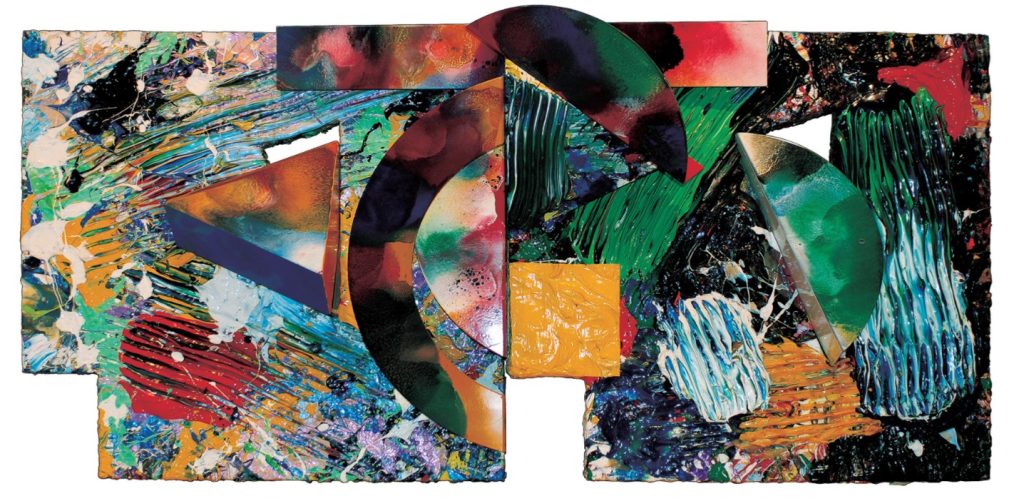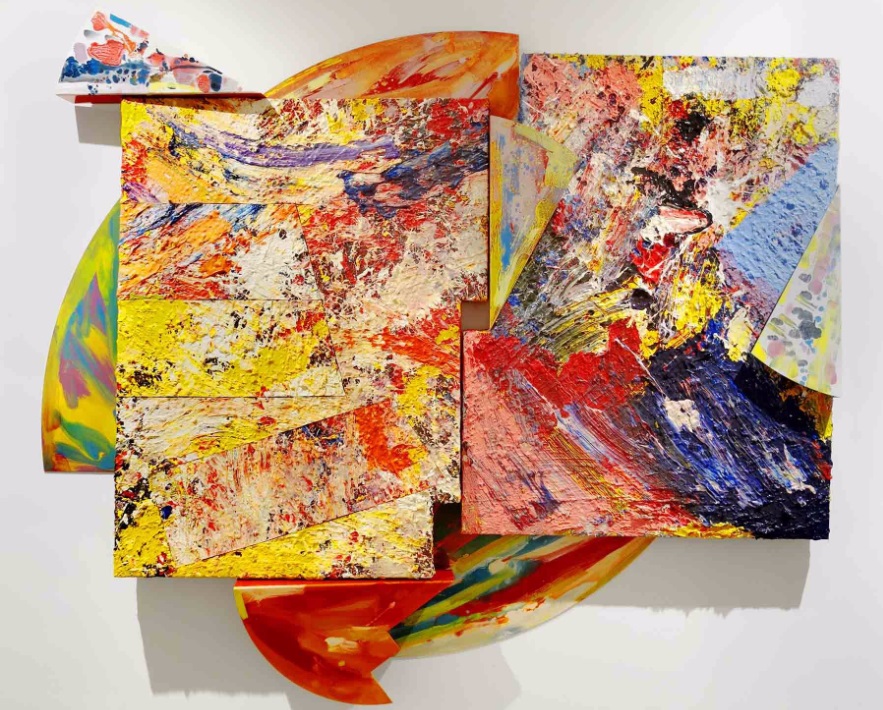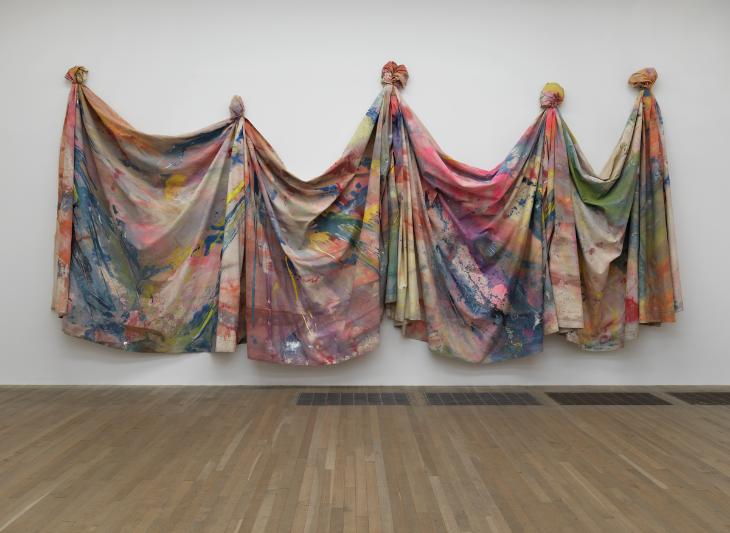American abstract artist Sam Gilliam was born in Tupelo, Mississippi, on November 30, 1933. He is most identified for his inventive work with draped, coloured canvas and is connected to the Color Field movement. Gilliam’s method of painting transcends the traditional rectangular canvas since he frequently lets his canvases hang, fold, or drape in ways that defy the rules of the medium.
Gilliam became well-known in the 1960s and 1970s and was a vital member of the Washington Color School, a Washington, D.C.-based group of painters renowned for investigating colour theory and abstraction. Over time, Gilliam’s practice expanded to include aspects of sculpture and performance art. His 1969 piece “Drape,” in which he hung a canvas from the wall and let it fall to the floor, is among his most well-known works. This break from the conventional stretched canvas was a turning point in both his career and the evolution of abstract painting.
Sam Gilliam has won numerous accolades and prizes for his contributions to modern art, and his work is included in many esteemed collections. He is praised for his contributions to extending the possibilities of abstract painting and his significant artistic practice.
Art of Sam Gilliam

A notable example of Gilliam’s inventive use of colour and form is “Red April” (1970). The painting’s unconventional presentation and striking red colours subvert conventional ideas of canvas and frame. “Carousel Form II,” one of Gilliam’s famous draped and hanging canvases, is a powerful illustration of this technique. A vast, vibrant canvas is stretched and twisted throughout the piece to produce a dynamic, three-dimensional composition.
The 1969 work “Light Depth” reveals Gilliam’s involvement with the Color Field movement. The artist’s expressive use of the canvas and the painting’s vibrant colour scheme imply a dynamic and engaging experience. Gilliam experiments with blending colours and forms in “Double Merge” (1968), producing vivid and intricate artwork; the work demonstrates his ability to experiment with various methods and materials.
“Lady Day II” (1971), a large-scale, multi-panelled piece honouring jazz diva Billie Holiday, demonstrates Gilliam’s love of improvisation and spontaneity. The vibrant colour scheme and the panel arrangement add to the overall impression of movement and vitality. During his later career, Gilliam continued to push the frontiers of abstract painting, as evidenced by “Yield Gently” (1980). Layers of colour and texture abound in “Yield Gently,” and the artist’s geometric shapes give the piece depth.
His exploration of the organic shapes and forms of leaves is shown in the “Leaf” series of paintings (1975). These artworks frequently combine complex designs with vivid colours.
Art and Sam Gilliam

Gilliam is well known for his innovative use of shapes and materials. He questioned conventional painting ideas by playing with the canvas and enabling it to be draped, folded, and suspended. Abstract art’s potential changed dramatically with this break from the traditional stretched canvas.
Gilliam significantly contributed to the Color Field movement in the 1950s and 1960s. Gilliam and other artists connected to this movement concentrated on paint’s emotional and perceptual impact on the observer and expansive colour schemes. Bold and vivid colours define Gilliam’s paintings, further exploring colour as the primary expressive component in art.
Gilliam was a member of the Washington Color School, a D.C.-based collective of painters noted for examining colour theory and abstraction. In collaboration with artists such as Morris Louis and Kenneth Noland, Gilliam helped shape a distinctive regional aesthetic that became well-known nationwide.
Gilliam’s hung and draped canvases were excellent in terms of form. By allowing his paintings to hang freely, he added a sculptural element to the image, contesting the two-dimensional constraints of traditional canvases. How art can be viewed and experienced has expanded with the invention. Gilliam’s passion for jazz music is frequently evident in his work, especially his improvised and unplanned style. Some of his pieces have titles that allude to a relationship between his art and the jazz world, like “Lady Day II,” named after Billie Holiday. This highlights the multidisciplinary aspect of his oeuvre.
As an African American artist, Gilliam has lighted a path in art. His prestige and impact have aided in the dismantling of racial barriers and fostering diversity in the art world. Gilliam has produced a significant body of work; his extended career in the art industry and willingness to try out novel concepts show his influence on contemporary art development.
Dread Scott: Provoking Dialogue and Confronting Injustice Through Transformative Art





